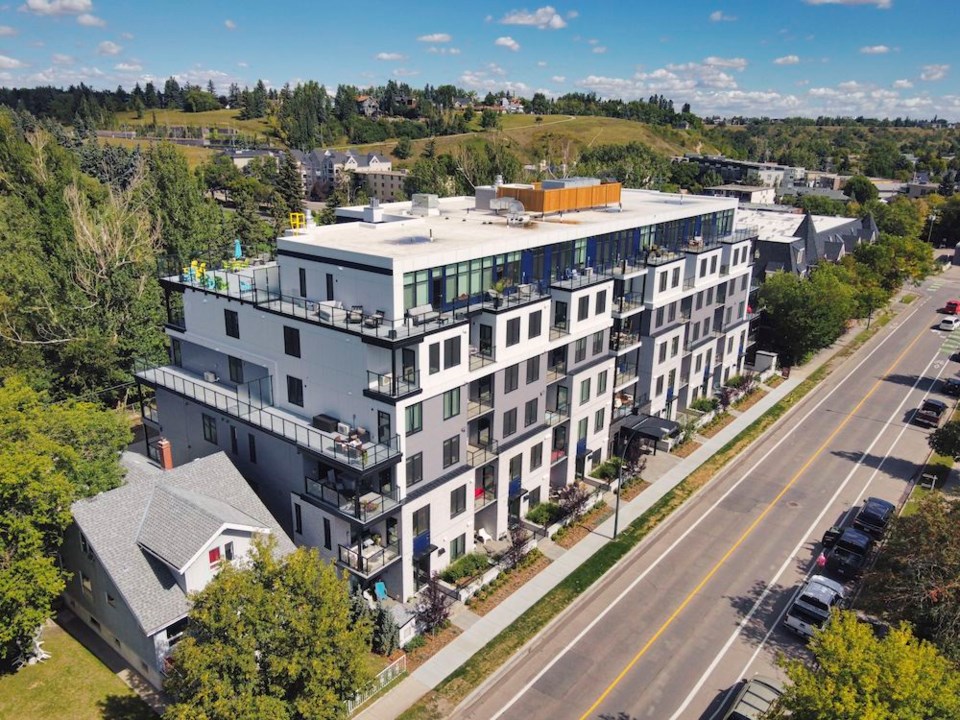Residential landlords on the Prairies are seeing some of the strongest demand since 2014, led by a rebound in Alberta’s largest cities.
The latest Canada Mortgage and Housing Corp.(CMHC) data showed that Calgary was outpacing the West in terms of new construction, but it wasn’t enough to keep up with strong demand from tenants as the economy rebounded and workers poured in.
The number of occupied units in Calgary increased 10.7 per cent last year, CMHC reported in its annual rental market report, outstripping 8 per cent growth in the number of purpose-built rental units. This helped push down vacancies to 2.7 per cent, the lowest level for the city since 2014.
In turn, the average rent for a two-bedroom purpose-built rental apartment rose 6 per cent to $1,466 per month. This was the strongest increase seen in any Prairie market last year. Investor-owned condos saw rents increase 8 per cent to $1,648 a month, the median for the region.
“With Calgary’s economy growing beyond pre-pandemic levels, the rental market tightened to conditions not seen since Alberta’s last economic boom,” Michael Mak, a senior analyst with CMHC, in noting what lies ahead for 2023.
This has boosted investor interest, with brokers seeing an uptick in sales despite higher interest rates. Strong increases in rents, and a potential upside as the economy strengthens, have helped offset higher financing and ownership costs.
Rental apartments were among the fastest-growing asset types in terms of investor interest during the first nine months of 2022, according to Altus Group, attracting 66 per cent more dollars than a year earlier. Key deals during the third quarter included Peak Estates, a four-year-old multifamily development in Canmore that Boardwalk REIT acquired from Starlight Investments last July for $63.5 million, or $429,054 per unit. An even higher price was achieved by the Vic on 5th, a new six-storey building Manulife acquired from the Spray Group for $36.8 million, or $465,823 per unit.
Edmonton sales also up
Similarly, multi-family rentals were a fast-growing segment in Edmonton, with sales up 41 per cent in the first nine months of last year to $636.3 million. Recent deals included the Augustana, a new 30-storey downtown apartment building completed by Pangman Development Corp. in 2021 and sold to Hazelview Investments in September for $90.1 million. The price per unit was $375,417.
“The private sector is absolutely on fire in terms of looking for product,” said Amit Grover, a principal with Avison Young in Edmonton focused on multifamily. “They’re coming in from Ontario, they’re coming in from B.C. We’ve got a couple coming in from Manitoba as well.”
Nathan Gettel, president of the Network brokerage, says Calgary is seeing a similar influx, with out-of-province investors accounting for more than 60 per cent of total real estate investment.
“We’ve always heard that these people are out-priced in B.C. and Ontario, so it’s showing now that they’re coming to Alberta and purchasing real estate,” he said. “Multi-family’s always been an aggressive investment, in Alberta, for investors. … Edmonton and Calgary have some of the lowest rental rates in Canada for major markets, so there’s an upside there with rents.”
CMHC’s MLI Select program designed to encourage the preservation of affordable rental housing has supported investment, Grover said.
High household incomes in Edmonton make existing rents for most multifamily properties affordable, according to CMHC, allowing private investors to buy them up for low down payments.
“We’re about to put together a $42 million transaction and the debt component on it was $40 million,” he said. “The low-equity requirement is getting private investors very excited.”
While the activity has put downward pressure on cap rates, higher borrowing costs and higher rents have largely kept rates in the upper 4 per cent range.
“The caps are going to look better because the rents are going up, and the prices are staying the same right now,” Grover said. “But with all the demand coming through … it’s going to force the cap rates back to where they were.”
Gettel said Calgary cap rates have fallen 50 basis points versus 2020 and now range in the low 4 per cents, “which is probably historically quite low for Calgary.” He expects higher borrowing costs to lift rates by mid-2023.
West Coast brokers say Vancouver saw an immediate impact in that market, with sales dropping off in the second half of the year. Sophisticated buyers who recognize the market’s long-term value are returning, but Mark Goodman, principal with Goodman Commercial Inc., says prices have fallen and cap rates will rise.
“People are embracing the new market realities,” he said. “The sophisticated players who have been buying and selling in this market over the long-term are back.”
It doesn’t surprise Grover, who says B.C. offers the kind of capital appreciation that appeals to long-term buyers, while Alberta offers upside in cash flow.



